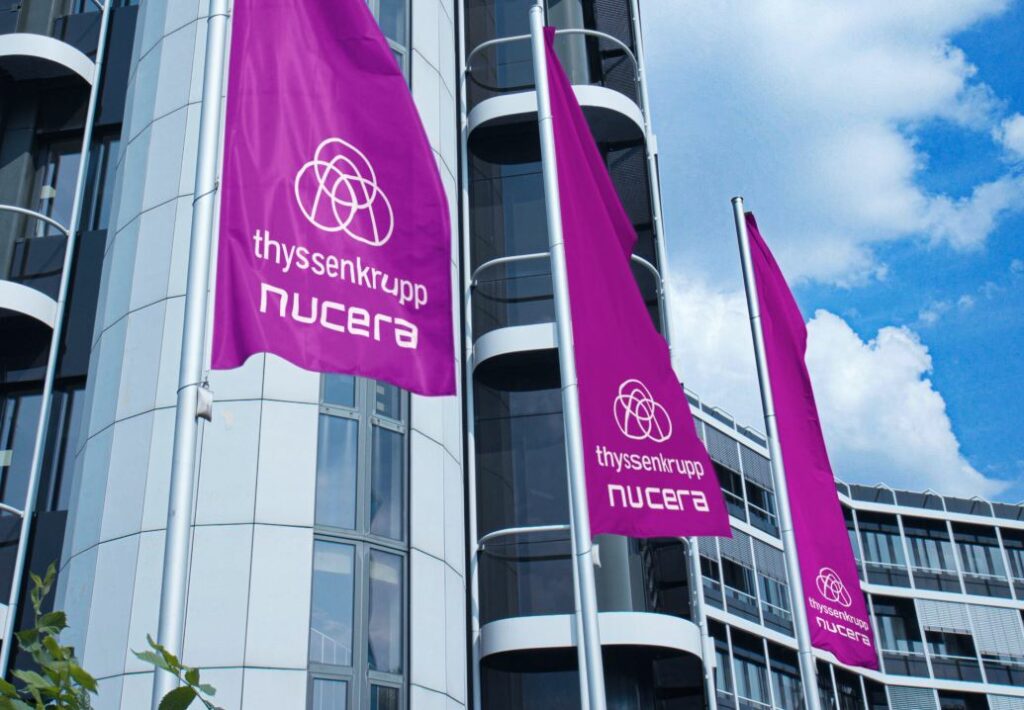Thyssenkrupp Nucera has been tapped to deliver front-end engineering design (FEED) services for an unnamed 600-MW green hydrogen project targeting hard-to-abate industrial sectors—one of the largest developments of its kind in the region to date.
The German electrolysis firm announced this week that it is conducting the FEED study on behalf of a confidential client, with plans to transition toward an engineering, procurement, and fabrication (EPF) agreement once the final investment decision (FID) is reached. The plant, if realized, would mark the third large-scale deployment of Thyssenkrupp Nucera’s alkaline water electrolysis (AWE) technology in Europe focused on decarbonising heavy industry.
Although details of the site and customer remain undisclosed, the project is consistent with broader industrial hydrogen trends, especially in steel, ammonia, and chemical production, where hydrogen adoption is progressing fastest under European climate frameworks. These sectors represent over 20% of Europe’s industrial emissions, and green hydrogen is increasingly positioned as the only scalable zero-carbon alternative.
While the project remains in the pre-investment phase, securing Thyssenkrupp Nucera for the FEED signals significant technical and commercial maturity. FEED contracts in green hydrogen projects are not mere studies—they determine plant footprint, system configuration, safety architecture, and energy integration, all of which strongly influence both bankability and eventual cost per kilogram of hydrogen.
Despite strong policy tailwinds from the EU Hydrogen Strategy, Thyssenkrupp Nucera’s CEO, Werner Ponikwar, noted that business cases for green hydrogen projects remain conditional on regulatory clarity, offtake agreements, and investment de-risking mechanisms.
That caveat highlights the persistent hurdles facing capital-intensive green hydrogen infrastructure: the need for long-term price visibility, guaranteed demand, and—critically—grid access to low-cost renewable electricity. Without those, large electrolyzer deployments risk being underutilized or economically non-viable.
As Europe aims to install at least 40 GW of electrolysis capacity by 2030, each large-scale FEED contract becomes a milestone, not just for the project in question, but for the continental trajectory of hydrogen industrialization.
Stay updated on the latest in energy! Follow us on LinkedIn, Facebook, and X for real-time news and insights. Don’t miss out on exclusive interviews and webinars—subscribe to our YouTube channel today! Join our community and be part of the conversation shaping the future of energy.
